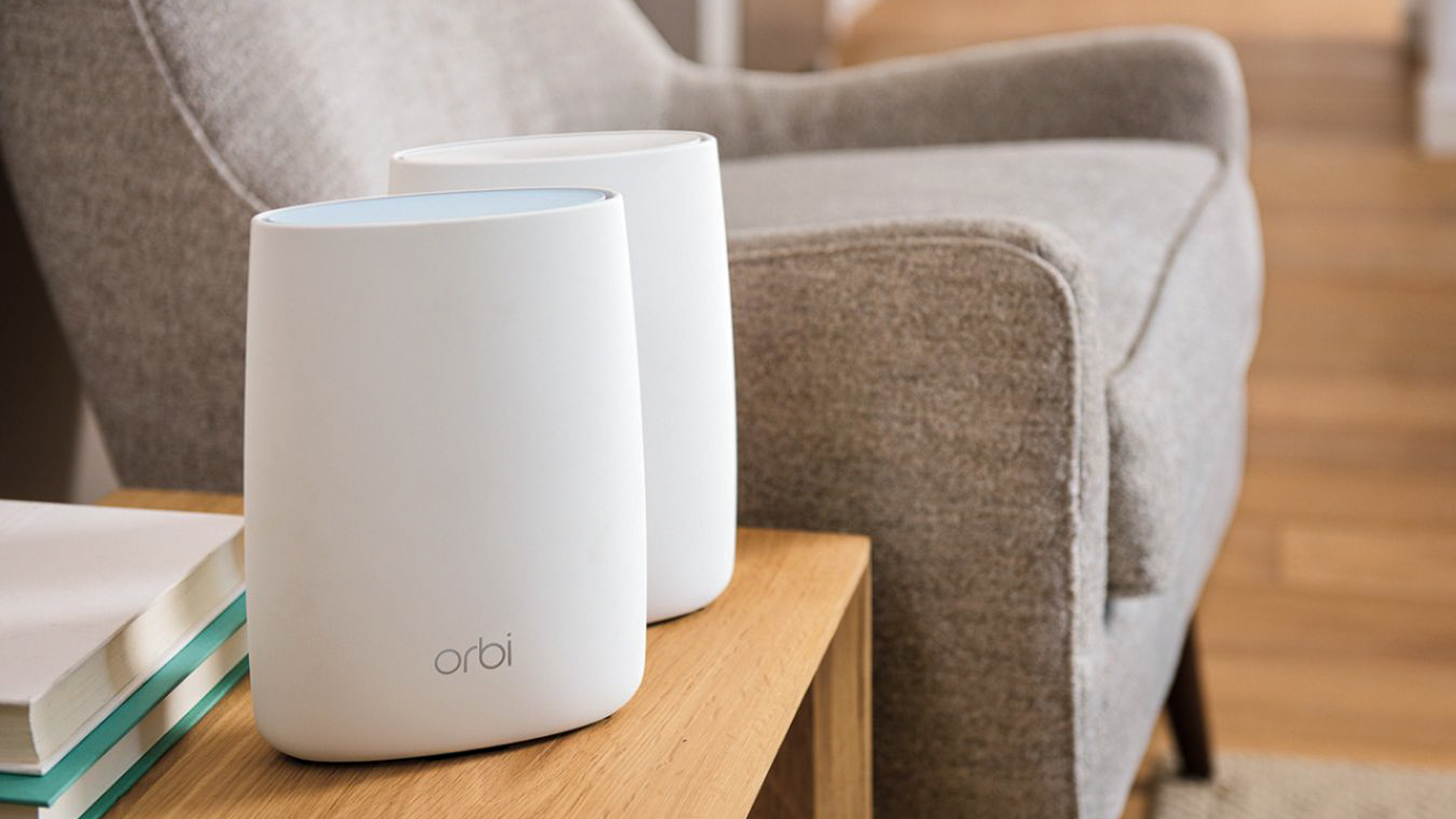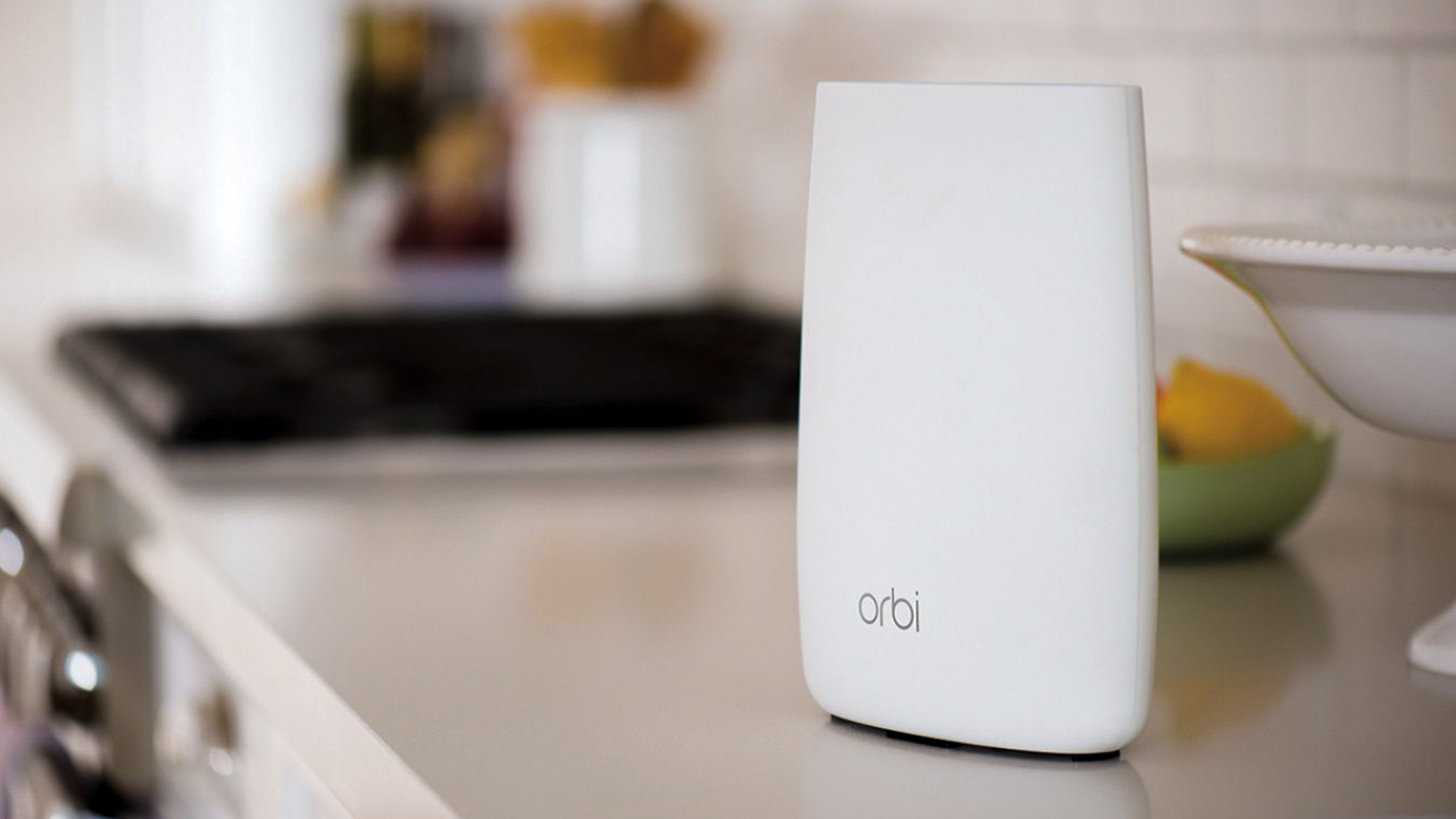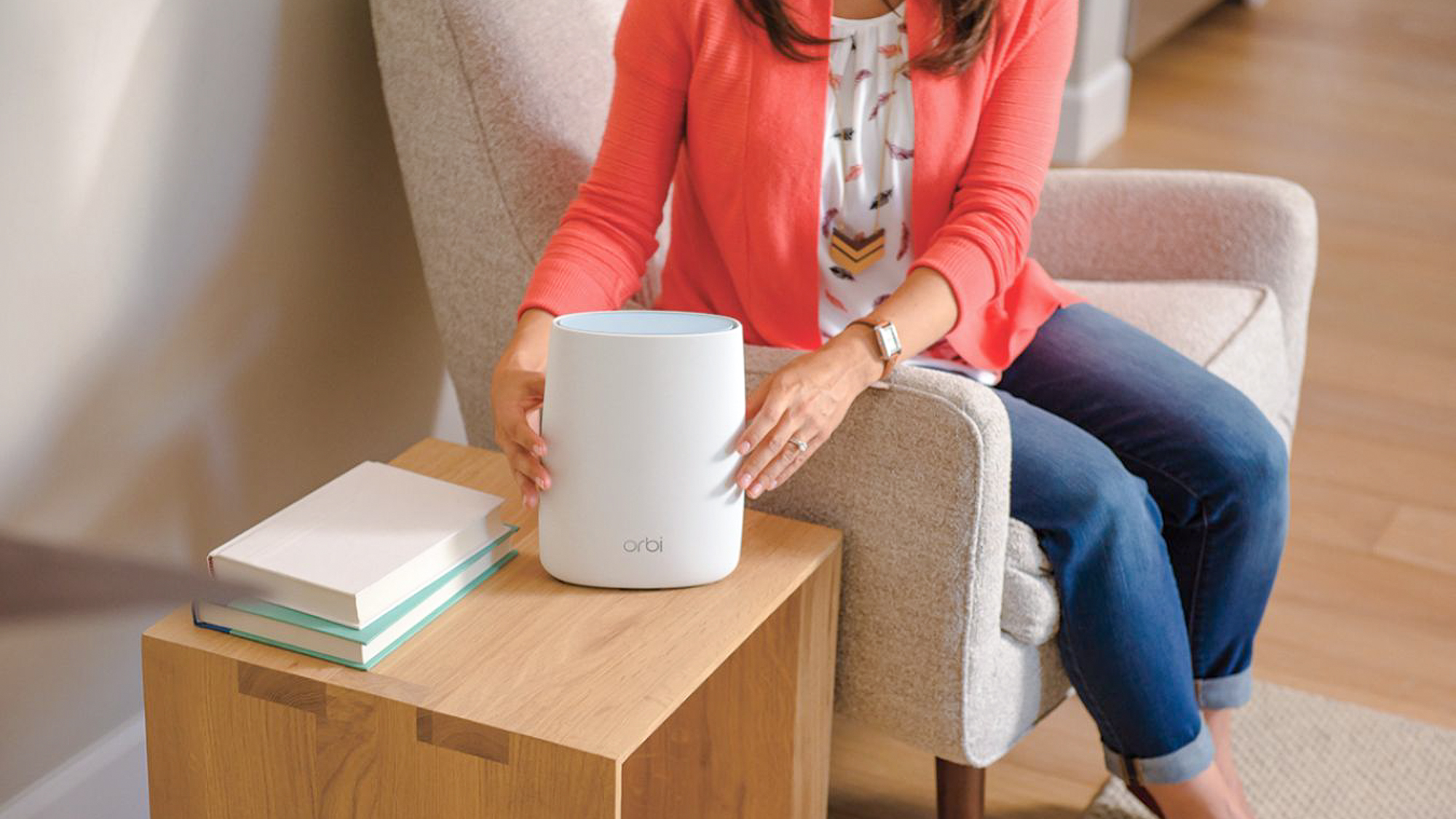This mesh router is the best thing I bought during the pandemic
A Wi-Fi extender just didn’t cut it for my home office. But this powerful mesh system did the trick

When working from home full time started in earnest this past March, I thought my home network was pretty well set up, but it only took a few weeks of my wife and I trying to do video conference calls simultaneously to realize that our home Wi-Fi connection needed improvement. And, it took three tries to get things right before I landed on the Netgear Orbi mesh router.
A little background: The attic in my house had been converted into a finished space by the previous owners. Prior to working from home full time, I had turned it into an entertainment area, as well as a place to test smart home gear. I also had my computer set up there for those days I did work from home.
On the first floor of my house, I had a Linksys EA8300 router that did a great job in terms of covering the first two floors, as well as outside. However, it didn’t quite reach my home office, so I needed to do something.
- The best mesh Wi-Fi systems for your home office
- iPhone 12 prices and specs just leaked for every model
- Just in: Intel Tiger Lake benchmarks leaked — and AMD should be worried

First try: The Wi-Fi Extender
I started by purchasing a Linksys RE9000 Wi-Fi extender to give the attic space a bit more oomph. This setup worked pretty well for a while, because what was up in the attic generally stayed in the attic. The problem was that the extender was powerful enough to reach down a floor, which caused problems when a device, such as a phone, would connect to the extender, but then have trouble jumping back to the main router as I descended down to the first floor.
Other times, a device would remain connected to the main router even when I was in the attic, and as a result, webpages and the like would load real slowly because of the weak connection.
Once my wife joined me in the attic full time, this became more of an issue as one of us would have to take our laptop down to the dining room or bedroom if we both had Zoom calls at the same time. It was just too erratic to work properly.
- Secure every device you own with the best router VPN
- A virtual router protects devices that don't natively support VPN
Second try: The cable provider
Because we have Comcast’s Xfinity internet service, my next thought was to upgrade our cable modem to its xFi Gateway, and to purchase its Pods (about $120 for a three-pack) to set up a mesh network in our house. It looked like a relatively inexpensive solution. The Pods were small, easy to set up, and I was able to cover my whole house. The Xfinity xFi app is pretty good, too, alerting you when new devices connect, if there are any security threats, and automatically blocking issues.
Get instant access to breaking news, the hottest reviews, great deals and helpful tips.
And it worked, for a while. But, after a few weeks, Pods, especially the ones in the attic, would suddenly go offline, often in the middle of one of us doing something important. We’d then have to unplug and re-plug the Pods back in and wait for them to reconnect to the rest of the network. It was incredibly frustrating. I even bought a second three-pack of Pods, in the hopes that by having more, it would spread out the network traffic or at the least, provide a bit more backup.
No luck. The Pods still went offline with regularity, and our laptops—mine a Mac, and hers a PC—did not quickly jump to a new Pod. Often, the two nearest Pods would go offline, which didn’t help matters. It was hugely frustrating.
The solution: A mesh router
So, I strapped on a facemask and went to my local Best Buy, where I bought the Netgear Orbi mesh Wi-Fi system. I chose the RBK50 (AC3000) model, one of the few models in stock at the store.

At $329 for the base station and a satellite, it wasn’t the least expensive option, but I liked that it has a dedicated backhaul channel, and that both the base station and the satellite have Ethernet ports, which allows me to plug in other accessories, such as a desktop PC.
I also wasn’t willing to pay upwards of $500 for a Wi-Fi 6 router, though given the number of smart home devices I have — upwards of 50 — it’s probably an upgrade I might need in a few years.
We’ve had the Orbi up and running for about a month now, with no issues. I still have my Xfinity Pods in place, and they’ve remained online too, so I suspect that they just couldn’t handle all the traffic from our work computers, as well as the dozens of smart home devices I have on my network. I also like that the Netgear app monitors my network traffic, and offers Bitdefender Security for any machine connected to the network. It also has parental security controls.

Seeing as we’re going to be working from home for at least the next six months — if not more — I’m glad to have resolved my network problems.
Given everything that’s going on in the world, and the fact that there are a lot of less fortunate people than myself who have a lot more to worry about, my difficulties getting a decent Wi-Fi signal to my home office are very trivial. But, at least for me and my wife, having a reliable Wi-Fi connection is essential for us being able to work, which is why the Netgear Orbi proved to be the best thing I bought during the pandemic. Well, that and a big block of cheese.

Michael A. Prospero is the U.S. Editor-in-Chief for Tom’s Guide. He oversees all evergreen content and oversees the Homes, Smart Home, and Fitness/Wearables categories for the site. In his spare time, he also tests out the latest drones, electric scooters, and smart home gadgets, such as video doorbells. Before his tenure at Tom's Guide, he was the Reviews Editor for Laptop Magazine, a reporter at Fast Company, the Times of Trenton, and, many eons back, an intern at George magazine. He received his undergraduate degree from Boston College, where he worked on the campus newspaper The Heights, and then attended the Columbia University school of Journalism. When he’s not testing out the latest running watch, electric scooter, or skiing or training for a marathon, he’s probably using the latest sous vide machine, smoker, or pizza oven, to the delight — or chagrin — of his family.
